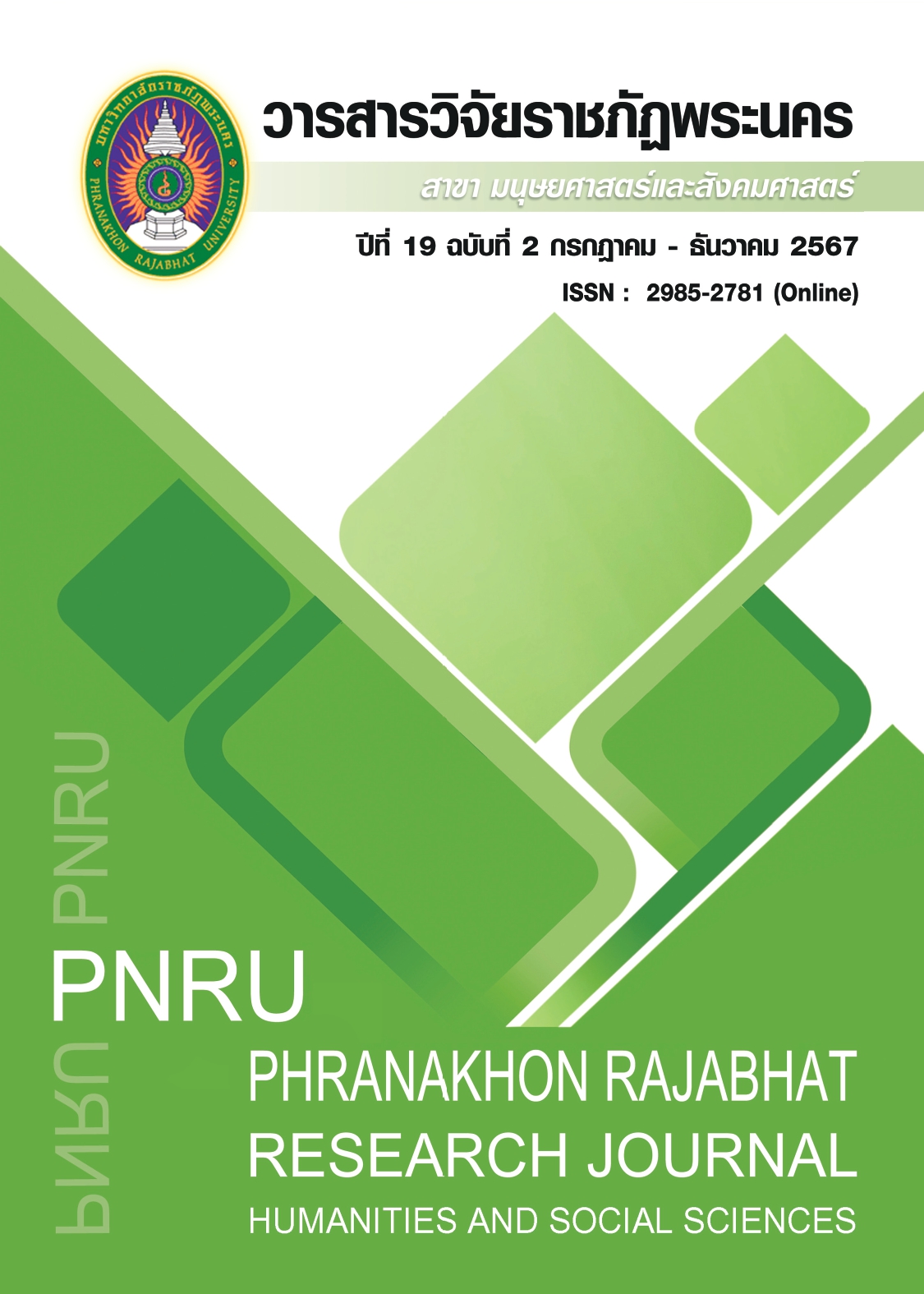NEEDS ANALYSIS OF USING ONLINE MEDIA AS GUIDELINES FOR TEACHING ENGLISH READING FOR UNIVERSITY STUDENTS
Main Article Content
Abstract
English Language Teaching (ELT) research has been a growing arena of research interest nowadays. However, four basic English skills, e.g., listening, speaking, reading, and writing, provide a deep root in studying the English language. Moreover, reading skills have been significant for many years to facilitate English learning. The notion of integrating online media into the English reading classroom is prioritized. A needs analysis should be conducted to investigate appropriate needs for English reading course development. The present study aims to study the needs of using online media for teaching English reading, study trends in using online media for English reading, and study recommendations for improving English reading skills. Using a wide range of instruments, e.g., questionnaire, semi-structured interview, and the researcher’s diary. The results revealed that the Kahoot is needed for studying reading in General Education (GE) (mean= 4.32, S.D. = 0.73). Online media trends between 2019 and 2024, namely Computer Assisted Instruction (CAI), website media, Instagram, and lastly the Kahoot. Experts’ opinion on trends were presented, including online media should be integrated into English reading to arouse learners’ interest. Reading topics should be related to learners’ ages. Google Drive, Google Classroom, online games, and Kahoot are employed for teaching reading according to experts’ views. Google Drive and Google Classroom are used to store assignments. The recommendations showed that it is advised to practice English reading regularly. Kahoot can be used to assess and reinforce their vocabulary. Utilizing online media, e.g., newspapers, websites, journals, and brochures, for English reading practice. Selecting topics of personal interest for effective English reading practice.
Article Details

This work is licensed under a Creative Commons Attribution-NonCommercial-NoDerivatives 4.0 International License.
Each publish articles were copyright by Phranakorn Rajabhat University
Any contents which appeared in each articles in the journal were authors personal opinion. It did not relate to Phranakorn Rajabhat University and other instructors in the university. Each authors would take responsibility on their articles. If there are any mistake, the authors will take responsibility themselves
References
Anggeraini, Y., & Afifah, N. (2017). Digital storytelling as a teaching medium in reading classroom. Language Circle: Journal of Language and Literature, 12(1), 83-90.
Aprilia, A., Sulistyaningsih, S., & Musyarofah, L. (2023). The use of Kahoot to improve students' narrative text reading comprehension. International Journal of English and Applied Linguistics (IJEAL), 3(2), 100-108.
Capalar, J. (2018). How important the English language to everyday life. Retrieved from https://www.linkedin.com/pulse/how-important-english-language-everyday-life-james-capalar [2024, 2 May]
Febriani, L., Dewi, M. P., Syahrul, S., & Syafitri, W. (2024). The effect of using Kahoot application to retain students’ vocabulary at the second grade of SMP N 3 X Koto. Jurnal Pendidikan Tambusai, 8(1), 1193-1198.
Gilakjani, A. P., & Sabouri, N. B. (2016). A study of factors affecting EFL learners’ reading comprehension skill and the strategies for improvement. International Journal of English Linguistics, 6(5), 180-187.
Habib, M. A., Mustapha, M. A., & Ali, H. (2019). Use of computer assisted instruction to improve students' reading skill in English language. Journal on English Language Teaching, 9(1), 32-37.
Isaqjon, T. (2022). Strategies and techniques for improving EFL learners’ reading skills. “Involta” Innovation Scientific Journal, 1(11), 94-99.
Khusniyah, N. L. (2022). Digital learning media needs analysis for English reading comprehension class. Al-Ishlah: Jurnal Pendidikan, 14(1), 241-248.
Marsa, S. S., Kuspiyah, H. R., & Agustina, E. (2021). The effect of Kahoot! Game to teaching reading comprehension achievement. Journal of English Teaching, 7(2), 133-149.
Nuttall, C. (2005). Teaching reading skills in a foreign language. Macmillan.
Phieanchang, T. (2020). The effects of the COR teaching methodology on EFL students’ reading comprehension. (Master’s thesis). Bangkok: Srinakharinwirot University.
Putri, R. D. F., Hadi, M. S., & Mutiarani. (2021). The efficacy of Instagram @gurukumrd as the media in improving students reading skills. JOLLT Journal of Languages and Language Teaching, 9(3) DOI: https://doi.org/10.33394/jollt.v%vi%i.3795
Rasyid, Y., Dewanti, R., Im, H., & Semyanov, L. (2022). Need analysis for English reading teaching materials in vocational school based on digital applications. Al-Hijr: Journal of Adulearn World, 1(3).
Sandhu, R. What is reading? - Definition & process. Retrieved from https://study.com/academy/lesson/what-is-readingdefinition-process.html [2024, 2 May]
Sitinjak, G., Sinaga, N. T., & Tampubolon, S. (2022). The effect of using Kahoot! Game in teaching English to improve students’ reading comprehension. Cendikia: Media Jurnal Ilmiah Pendidikan, 13(2), 379-384.
Songsiengchai, T. (2010). Strategies in reading online and printed academic texts of English major students of Srinakharinwirot University. (Master’s thesis). Bangkok: Srinakharinwirot University.
Syakur, A., Fanani, Z., & Ahmadi, R. (2020). The effectiveness of reading English learning process based on blended learning through" Absyak" website media in higher education. Budapest International Research and Critics in Linguistics and Education (BirLE) Journal, 3(2), 763-772.
Tarigan, H. G. (2008). Membaca Sebagai Suatu Keterampilan Berbahasa. Angkasa.
Yapp, D., de Graaff, R., & Van Den Bergh, H. (2023). Effects of reading strategy instruction in English as a second language on students’ academic reading comprehension. Language Teaching Research, 27(6), 1456-1479.
Zarei, A. A., & Amani, M. A. (2018). The effect of online learning tools on L2 reading comprehension and vocabulary learning. Teaching English as a Second Language Quarterly (Formerly Journal of Teaching Language Skills), 37(3), 211-238.


